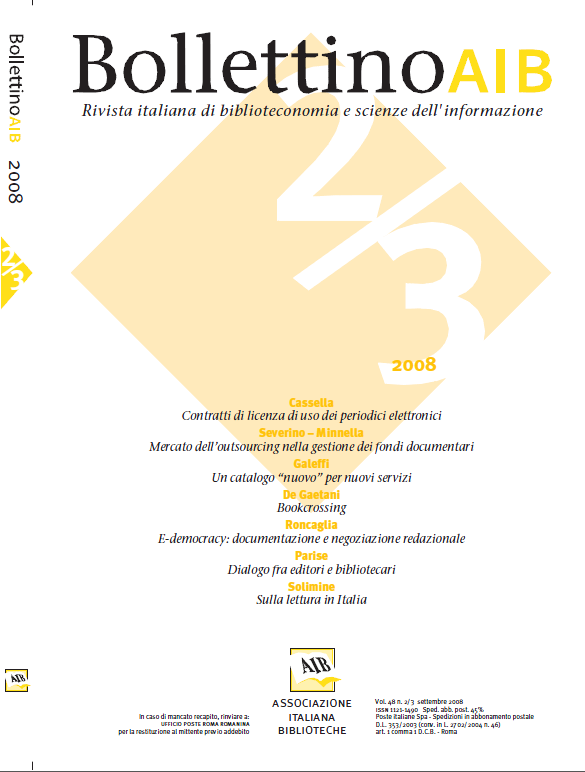A "new" catalogue for new services
Main Article Content
Abstract
In the year 2000, during the Bibliocom convention of Milan, Mauro Guerrini presented a list of the factors that contribute to creating a high quality catalogue; in the years that have passed since then, the catalogue has undergone some deep discussion mainly for two reasons: on the one hand, pressure due to the necessity to bringing legal codes and catalogue tradition into line with the potential offered by new technology, and, on the other, by the appearance of numerous rivals within the area of research: search engines, especially, that exploit the possibilities offered by information present on the web, and other important actors belonging to the world of publishing production and distribution.
The ten high quality factors that have maintained their effectiveness are put into new order here and grouped into three sections the first of which is dedicated to high quality cataloguing, the second to system quality and the third to OPAC quality.
The updating of the catalogue to the new requirements and therefore its level of correspondence to user needs are often evaluated simply on the basis of technical requirements, particularly regarding the software used for presenting the bibliographical data: fundamentally the catalogue is often judged through the OPAC, the user interface, the research and presentation mask of the results made available on Internet. On this occasion, however, using Guerrini’s list as a basis, it is intended to present an approach to the question of the evaluation that analyzes the catalogue as a communication tool and the difficulties that this involves. Finally, some references to Italian and foreign creations will make it possible to demonstrate some of the solutions that were adopted for bringing users closer to the catalogue.
The ten high quality factors that have maintained their effectiveness are put into new order here and grouped into three sections the first of which is dedicated to high quality cataloguing, the second to system quality and the third to OPAC quality.
The updating of the catalogue to the new requirements and therefore its level of correspondence to user needs are often evaluated simply on the basis of technical requirements, particularly regarding the software used for presenting the bibliographical data: fundamentally the catalogue is often judged through the OPAC, the user interface, the research and presentation mask of the results made available on Internet. On this occasion, however, using Guerrini’s list as a basis, it is intended to present an approach to the question of the evaluation that analyzes the catalogue as a communication tool and the difficulties that this involves. Finally, some references to Italian and foreign creations will make it possible to demonstrate some of the solutions that were adopted for bringing users closer to the catalogue.
Article Details
Section
Articles

This work is licensed under a Creative Commons Attribution-ShareAlike 4.0 International License.
